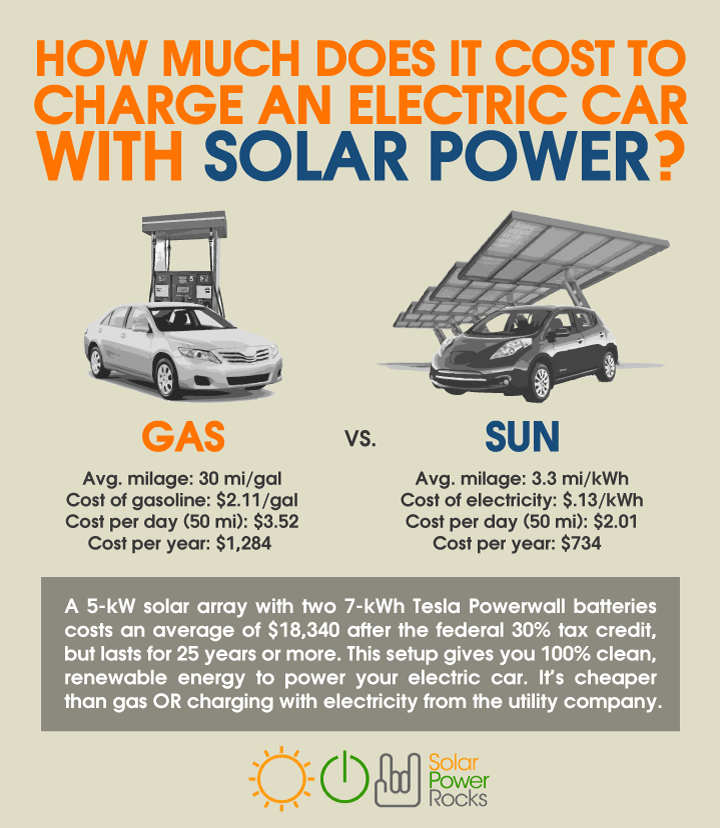For many car owners, tire rotation is at the very bottom of their maintenance checklist. But it’s one of the simplest, yet most critical maintenance activities. After all, no matter how great the condition of your vehicle, if the tires are in bad shape, your car might not perform at the intended level.
One reason for ignoring tire maintenance is the fear of mounting car ownership costs. These expenses can add up to a sizeable amount over time, but they're crucial for keeping your vehicle in good shape. With that in mind, how much does a tire rotation cost? And does your car really need it? In this article, we're going to help you find the answers.
In simple terms, a tire rotation involves switching your vehicle's four tires. This is essential since tires usually wear unevenly because of the different levels and types of stress they endure at each wheel. For example, in front-wheel drive vehicles, front tires typically wear out faster than the rear ones. And if you’re frequently taking sharp right turns, it could put extra stress on your left front tire.
By rotating tires regularly, you can help achieve similar wear on all four tires over time. It alternates the levels of stress so that one tire doesn't get worse than the others. Ideally, this should prevent you from needing to replace your tires more often because they'll all be wearing down evenly.
Rotating your tires on a regular basis can also reduce the strain on drive components and provide better traction and handling when you're making those sharp turns or stepping on your brakes to come to a sudden halt. Therefore, in the long-term, tire rotations may yield significant cost savings when it comes to tire replacements and general maintenance. Having your tires rotated could even improve the vehicle’s overall performance and provide better fuel efficiency. This means you may save money at the gas station, too.
In many cases, it might be a mandatory requirement for tire warranties to remain valid, so you'll have to do it if you want to keep your tires covered.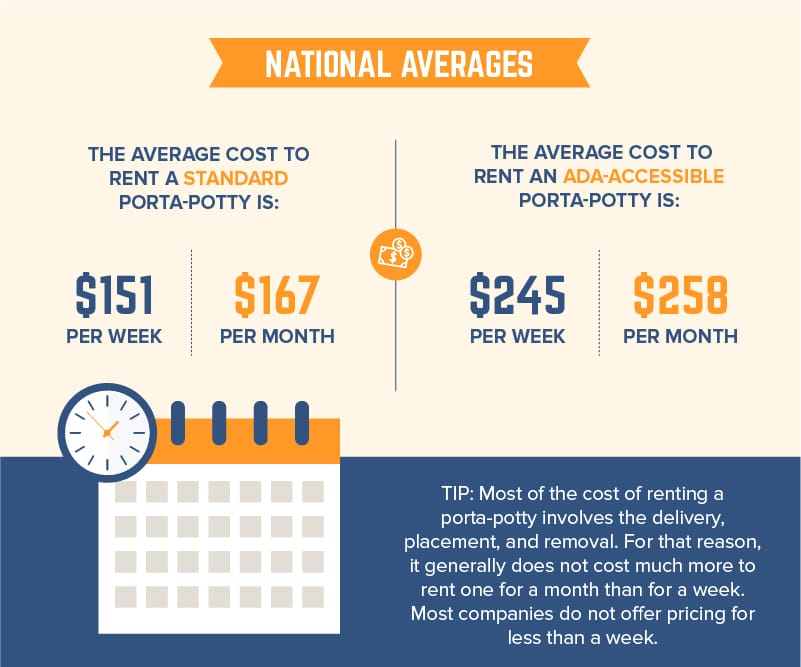 But most importantly, it could improve road safety for you and your loved ones. That's something you should never leave to chance.
But most importantly, it could improve road safety for you and your loved ones. That's something you should never leave to chance.
Mechanics typically recommend a tire rotation every 5,000 to 8,000 miles, check your owners manual for the manufacturer’s recommendations. That’s around every six to 12 months, but this could depend on several factors. For example, the tire rotation frequency could vary based on your car’s make and model. If you’re using a newly bought vehicle, then the owner’s manual can guide you on this.
A car that undergoes rough handling may also need more frequent tire rotations. The weight of the vehicle could have a say in this, too. And a new set of tires usually require a rotation sooner. This is because uneven tread wear would be more pronounced on new tires than on their older counterparts.
You can also gauge uneven tire wear on your own with a visual inspection. If you haven’t rotated the tires in a while, you may notice different levels of tread wear on each tire. Also, watch out for frequently low tire pressure on one or two tires or a vibration when you’re driving at higher speeds. All these could signal that it’s high time for a tire rotation.
Also, watch out for frequently low tire pressure on one or two tires or a vibration when you’re driving at higher speeds. All these could signal that it’s high time for a tire rotation.
If in doubt, speak to a qualified mechanic for advice on when you should rotate your tires.
Generally, a tire rotation could cost somewhere between $24 to $50. But sometimes, it could even go up to $120. What you pay might depend on where you go and what other services you get.
Some car owners who are looking to cut down on maintenance costs may choose to perform this task on their own, but it’s usually best to hire a qualified mechanic. Taking your car to a professional could give you an opportunity to get a quick visual inspection done by an expert.
For instance, they could check for uneven tread wear on the inside and outside parts of a tire, which may mean a more serious issue that requires attention. Your mechanic could also advise you on the best tire rotation pattern for the car. This would depend on several factors such as your vehicle and tire type.
This would depend on several factors such as your vehicle and tire type.
At the end of the day, tire rotation costs should not prevent you from getting your tire maintenance work done on time. The benefits of having this service performed regularly usually outweigh the cost. If you find your mechanic’s quote to be on the high side, don’t be afraid to shop around and find somewhere more affordable.
Here are a few other tips to keep in mind when thinking about tire rotation:
 And uneven wear might signal that the car hasn't gone through regular maintenance. Understanding these could help you negotiate a better deal.
And uneven wear might signal that the car hasn't gone through regular maintenance. Understanding these could help you negotiate a better deal.Unlike an oil change or a brake disc service, you may not encounter immediate troubles if you forget to schedule a tire rotation. But the consequences of continuing to neglect it could be costly, not just financially, but also in terms of safety. Remember, the performance of your entire car may ride on your tires, quite literally. So, regular tire rotation and maintenance should not be just an afterthought.
Written by Steven Schiller
Fact checked by Henry Speciale
PPMC-Transport is supported by its audience. When you buy through our links, we may earn an affiliate commission. Learn more
When you buy through our links, we may earn an affiliate commission. Learn more
The tires of your car have a huge role in giving you a comfortable and safe ride. This is why it is important to occasionally inspect them and do a tire rotation. But how much does a tire rotation cost?
Tire rotation usually costs from $20 to $80 for a set of tires, depending on the auto repair shop you visited. Some shops would offer a free tire rotation service for some time if your tires were bought from them.
Table of Contents
If you start feeling differently while driving on smooth roads, it can be caused by the uneven wear of your tires. This would require you to have your tires checked and you will probably spend money for tire rotation and alignment.
The cost of tire rotation varies for each repair shop. Here are some factors that affect their pricing:
 The rate of a mechanic depends on his level of expertise. So if you want a more experienced mechanic to inspect your tires, it may come with a hefty price.
The rate of a mechanic depends on his level of expertise. So if you want a more experienced mechanic to inspect your tires, it may come with a hefty price.For instance, rotating tires of a Honda Civic or Toyota Corolla will cost as much as $45, but a Land Rober or a Jaguar tire rotation service will charge you up to $60.
To provide you with a better representation of the average cost of a tire rotation, I made a list of some common auto service shops and their rate for this type of service.
At Firestone, different discount coupons for different products and services are offered through their official website.
So, how much does discount tire rotation cost at Firestone? A car care coupon from them would allow you to have tire rotation for only $9.99.
Without a discount, they have a flat rate of about $25 for this service.
Starting with only offering oil change services, different car maintenance services including changing filters, brake inspection, and tire rotation are now available at Jiffy Lube.
The rates of these services vary depending on the location of the shop. The usual cost for tire rotation here is about $40, which is still cheaper than what other auto service shops offer.
Discount Tire offers about $15 per tire for tire rotation. Fortunately, you can have a tire rotation and balance service free of charge if you buy your tires from them.
They also provide good deals when it comes to tires as their prices are lower than those of other shops. Tires can be found here for half the price of the same tires at other stores.
Another place for you to get tires rotated is at Midas. Tire rotation here starts at about $20, which could go higher depending on the type of vehicle that you have.
However, you can get it for a lower price when you purchase a car maintenance package that includes tire inspection, tire rotation, and oil change.
YourMechanic has a lot of car maintenance services to offer. They even have a mobile mechanic that can come to your house if you need some services for your car.
When it comes to tire rotation, they are on the pricey side of the usual price range. It would vary depending on the make of your vehicle but it usually starts at $79.
Also, here is a list of other auto service shops for your reference:
What is a tire rotation?
Tires usually wear unevenly as they are getting different amounts of pressure when you are driving. When this happens, a tire rotation is made by repositioning the four tires of your car to be able to balance their wearing.
When this happens, a tire rotation is made by repositioning the four tires of your car to be able to balance their wearing.
Different tire rotation patterns are used depending on the needs of a vehicle. Here are some common tire rotation patterns:
Why is a tire rotation necessary?
Tire rotation allows your tires to wear evenly. And the even wearing of tires can benefit you in many ways such as comfort, safety, and money.
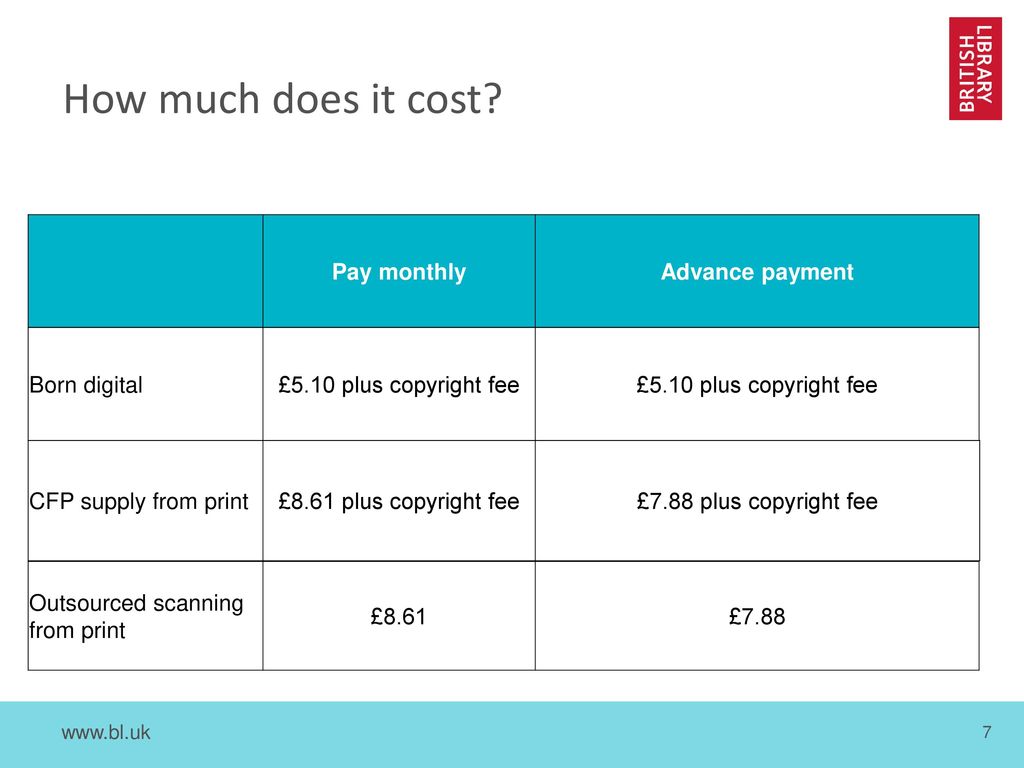
How often should you rotate your tires?
Usually, tire rotation should be done every 5,000 to 8,000 miles. However, the frequency of tire rotation could vary depending on the type of your vehicle, its weight, and how rough you handle it.
You could also check the recommendations of the tire manufacturer to confirm if you already need to have a tire rotation.
Is rotating tires worth the cost?
Rotating tires is definitely worth the cost. Some people believe that tire rotation will just cost you more when, in fact, you are saving money in the long run.
As tire rotation improves the longevity of your tires, you would not need to spend more money replacing tires that are prematurely worn out. You will also spend less money on gas as it helps for a more fuel-efficient ride.
How long does a tire rotation take?
It usually takes around 30-45 minutes to finish tire rotation. However, it can be quicker or longer depending on the make of your vehicle and the number of tires that you want to rotate.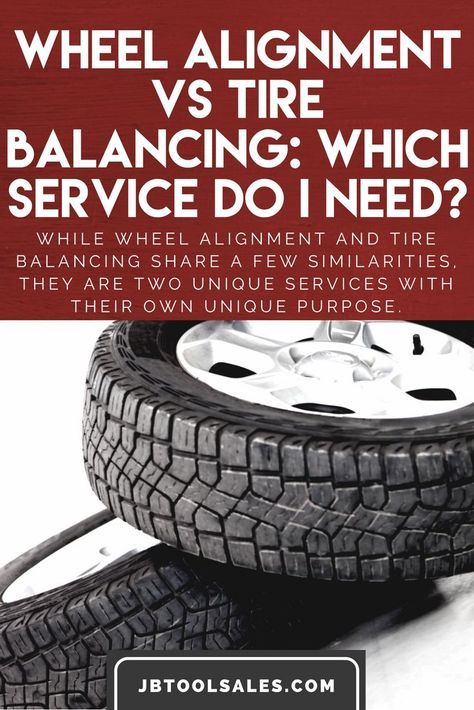
Other tire maintenance services that you avail of will also add up to the time that it would take for this service.
I mentioned above the possible prices of tire rotation that most auto repair shops offer. Just keep in mind that this does not have to be expensive. If you have the skills and equipment, you can even do it yourself.
Other shops are not included in this article but hopefully, I was able to give you an idea about “how much does a tire rotation cost?”. May this be the start of a more comfortable and safer trip for you.
Categories FAQsI'm Henry, the content writer for PPMC Transport. We build our site entirely on experience and extensive market and customer research.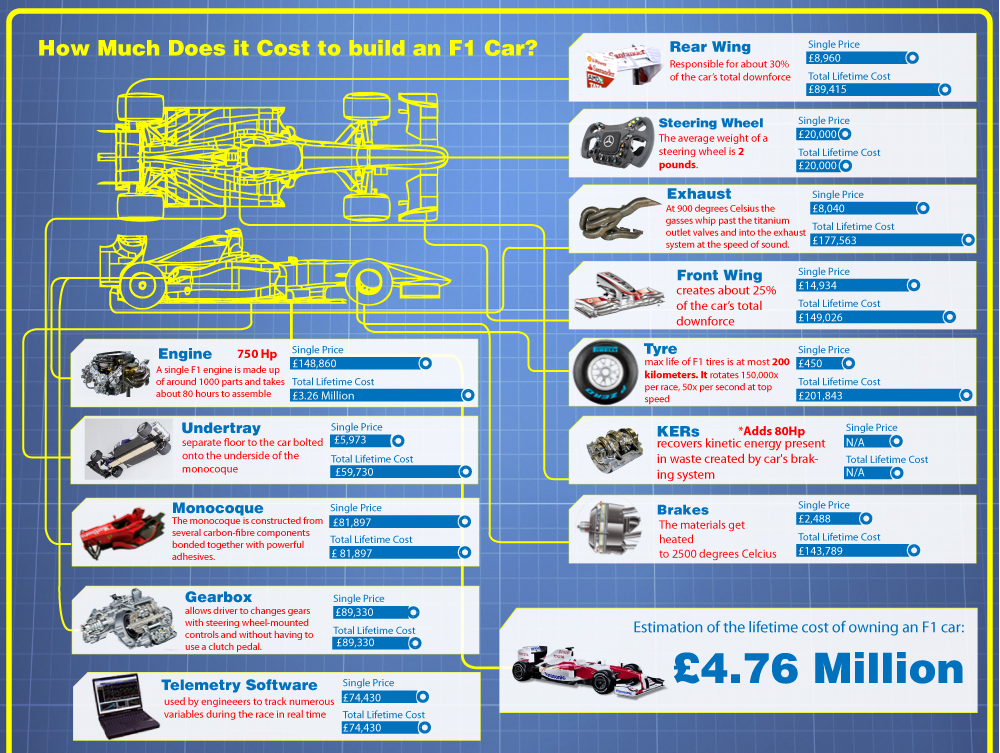 My goal is to create a trusted platform where people can go to determine what is best for their vehicles in terms of safety and convenience. Keep an eye out for our useful guide!
My goal is to create a trusted platform where people can go to determine what is best for their vehicles in terms of safety and convenience. Keep an eye out for our useful guide!
- Speciale Henry
5 tips on how to avoid a skid and a life hack on how to overcome a skid if it does happen
Illustrative photo Photo: shutterstock/WolfilserDangerous has come a period of thaw, when it is above zero during the day, and frosts at night, in addition, now it is freezing rain. As a result, ice forms on the roads, and the situation on the primer is especially dangerous. The two main rules that must be observed in order not to get into an accident are the observance of the speed limit and the distance. What else needs to be considered in order not to get into an accident? nine0003
Caution is required even on cleared roads. In weather conditions such as now, icing can form very quickly even on paved roads that are cleaned regularly, and even at temperatures above freezing, because the road surface does not heat up as quickly as air.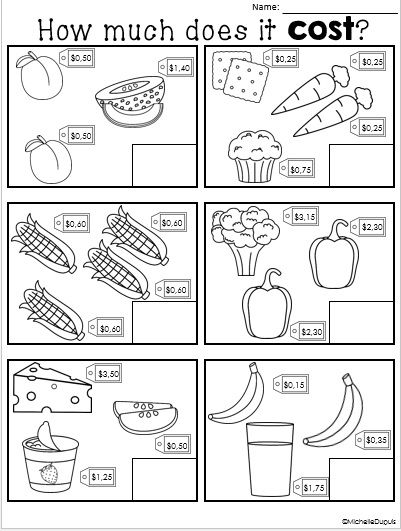 Icing occurs more quickly and most often on bridges and roads that are shaded or pass through depressions where cold air is concentrated. This frost is almost imperceptible, therefore it is called "black ice". So even in positive temperatures and even in a city where, it would seem, there should be no ice, one should be extremely careful. nine0003
Icing occurs more quickly and most often on bridges and roads that are shaded or pass through depressions where cold air is concentrated. This frost is almost imperceptible, therefore it is called "black ice". So even in positive temperatures and even in a city where, it would seem, there should be no ice, one should be extremely careful. nine0003
Check tire pressure. One of the most common problems with the technical condition of a car is too high or, conversely, too low tire pressure. Incorrect tire pressure seriously affects the handling of the vehicle and provokes uncontrolled movement of the vehicle. Obviously, on an icy road, the car already does not behave as the driver would like, so you should check in advance that the risks associated with incorrect pressure are minimized. The optimal tire pressure is indicated in the vehicle's data sheet or on a sticker located on the driver's door. nine0003
Check the condition of the tires. If you decide to "overwinter" with battered tires whose grip leaves much to be desired, then leave the car in the parking lot: sleet is not the time to drive on unreliable tires.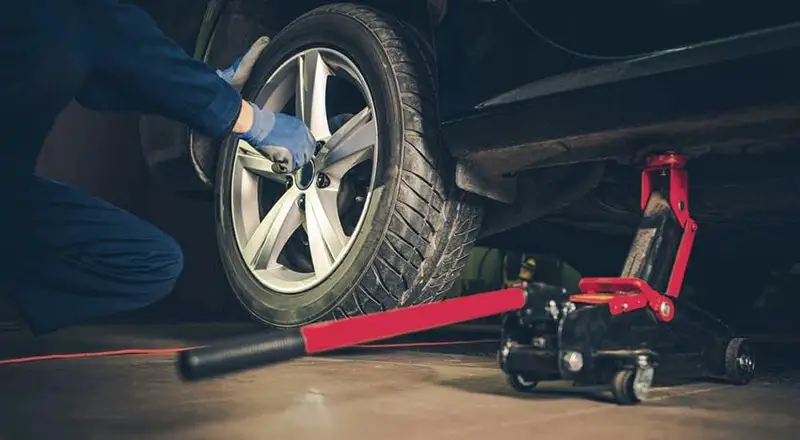
How do you know if your tires are failing? "The first criterion, of course, is the tread depth - it must be at least 4 millimeters. If the wear is greater, you risk not only getting into an accident, but also losing the insurer's compensation, since this aspect will be checked. Even if the tread meets the requirements , after 5 years, the rubber can become harder, which affects the grip on the road surface.So my advice is to pay attention to the date of manufacture of tires.To do this, find four numbers on the outside of the tire - the first two mean the week, and the last two mean the year.For example , 5021 means that the tires were manufactured in the 50th week of 2021," recommends Janis Vindedzis, Sales Manager at Longo Latvia, the largest used car dealer in the Baltics. nine0003
Well, if you do not have all-season tires, but studded tires, then you are in luck: they provide very good grip in case of ice, slush and snow, and are perfect for those who move not only around the city, but also outside it .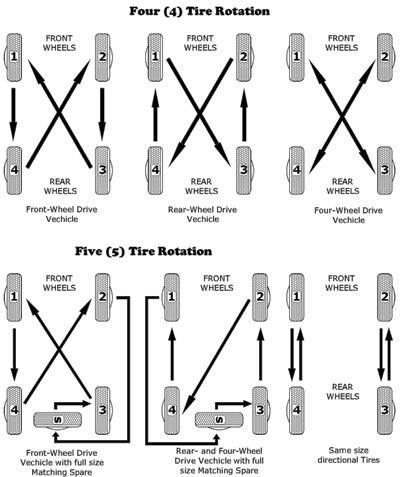
"If you are looking for a car now, pay attention to whether the tires have been replaced and what condition they are in. The Longo Service Center always checks if the tires are appropriate for the season, but if you buy a car from a private person, rely on him not worth it," adds J. Vindedzis. nine0003
Hand position on the steering wheel. Imagine a watch dial instead of a steering wheel: the left hand should be at 9 o'clock, the right hand at 3 o'clock. This is one of the most important laws of the road, which drivers often forget about. On ice, you should not hold a phone, a cup of coffee or mascara, as this can cost you your life.
Distance = speed times two - the distance between two cars on a slippery road can be easily calculated using this formula. That is, if you are driving at a speed of 50 km / h, then the required distance must be at least 100 meters. nine0003
What should a front wheel drive and rear wheel drive car do when skidding? If the car skidded, that is, the rear is trying to "overtake" the front, on a front-wheel drive car, you need to turn the steering wheel in the direction of the skid. This will allow the front wheel drive to pull the car out of the skid and the car will continue to move in a straight line.
With a rear-wheel drive car, you also need to turn the steering wheel in the direction of skidding, but you should generally refuse to press the gas pedal. As soon as the car is level, you can gently press the gas. nine0003
When driving a car in winter, you need to be sure of its technical condition and your skills. If there is any doubt about any of these points, it is better to leave the car in the parking lot.
ENG TVNET on Instagram: News from Latvia and the world in photos and videos!
Keywords
To make it clearer what consequences a car driver with wheels installed, figuratively speaking, "back to front", can face, let's figure out what directional tires are. nine0003
In this rubber, the drainage grooves are located in the direction of rotation of the wheel, converging towards the center in the direction of rotation.
Directional tires can be symmetrical or asymmetrical. In the first case, the tread halves mirror each other, enhancing traction and drainage capabilities. In the second case, the pattern type is different on both sides. Tires with directional tread are also available in winter, all-weather and summer tires, studded and studless.
In this case, directional tires are most often found on winter and so-called "rain" models. You can distinguish tires with a directional tread by marking "Rotation", an arrow or triangular notches indicating the direction of the car. nine0003
Why and who should choose "directional" tires
The choice of tires with directional tread is justified, first of all, when you rarely leave the pavement, that is, you move mainly in the city.
For rear-wheel drive vehicles, directional tires are also a smart choice and an option to increase traction, as the "driven" front wheels dry up the stretch of road before the rear wheels get to it. In addition, on winter snow-covered roads, the directional tread pattern helps to row snow and effectively remove it from the contact patch. nine0003
In addition, on winter snow-covered roads, the directional tread pattern helps to row snow and effectively remove it from the contact patch. nine0003
On packed snow, "directional" tires are again a priority. In summer, in addition to improved grip on wet surfaces, when choosing directional tires, we also get optimal driving stabilization. Such tires almost do not sag even at high speeds, and therefore are great for long-distance trips at a brisk pace.
What happens if you install the directional tires incorrectly
Now imagine that an inexperienced tire fitter or you yourself installed "directional" tires "against the wool, mounting them on the wheels with the opposite sidewall.
First of all, such an error will affect the braking distance, however, not as significantly as many people think. On average, when braking from 100 km / h on a wet or slippery surface, the car will travel about 1 - 1.5 meters more than a car with the right shoes - the corresponding measurements were repeatedly carried out by experts from leading automotive publications.
More serious hydroplaning problems. When the wheels, mounted on the wrong side, fall into a puddle, water or snow porridge will not be evacuated from the contact patch, and a so-called hydrodynamic wedge will appear in this area. As a result, the car can lose traction and literally "float", losing contact with the road already at 70 km / h. Accordingly, when driving on the highway, when the cruising speed is an average of 110 km / h, driving on rubber installed against the wool becomes literally dangerous. nine0003
It is also not surprising that the wrong orientation of the rubber complicates the control during extreme maneuvers, and also reduces the speed of their implementation. The steering angles increase and difficulties arise with the stabilization of the machine.
It is also clear that such tire fitting errors will lead to faster tire wear and higher driving noise. And, finally, problems can arise when driving on snow-covered primers. The tread of an incorrectly installed directional tire will collect snow in front of it and cause slippage.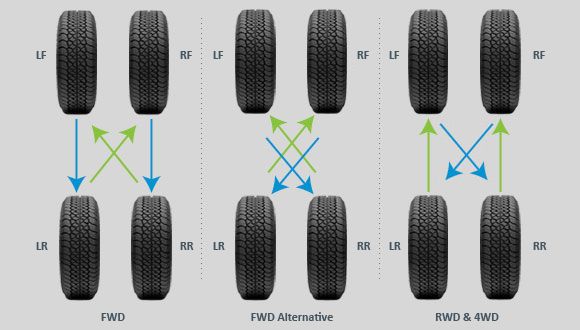 nine0003
nine0003
If only one wheel is incorrectly installed
It is especially dangerous when only one wheel is installed "against the course". In this case, the car will go off course due to different rolling resistance or due to different thrust vectors of the wheels of the left and right sides. In particular, sideways pulls will be observed, which will be especially noticeable when braking.
Also remember that if one of the wheels gets punctured, you may need to fit a spare tire. And if we are talking about a tire with a directional tread, then on one side of the car it will not work correctly. If this is the case, drive the spare tire with extra care without exceeding cruising 80-90 km/h
Pros of installing the wrong directional rubber
Perhaps the only advantage of installing directional rubber against wool is a slight improvement in flotation on the primer.
It is understandable - in this case, the protector will begin to better cling to loose or muddy surfaces.